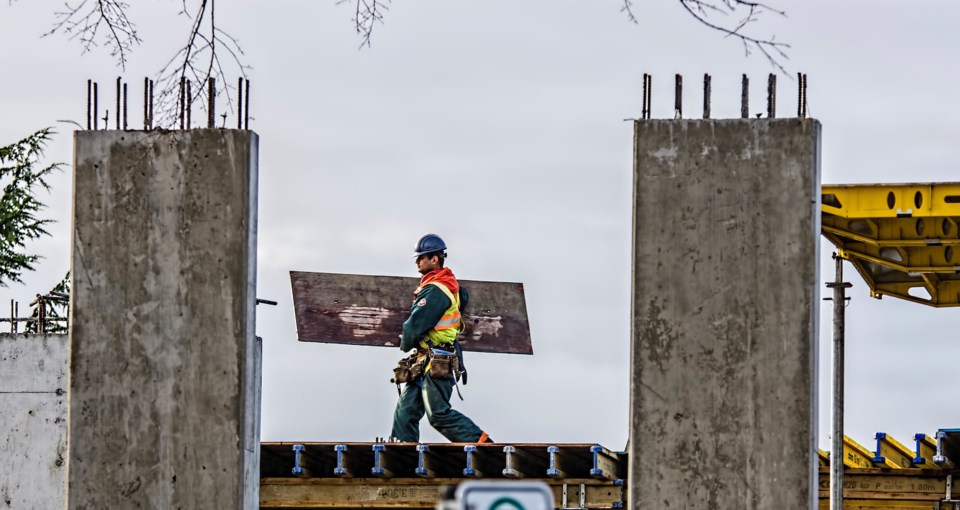Many B.C. construction industry businesses held out hope that COVID-19-related job losses in other sectors of the economy might help to relieve some of their labour shortage issues.
But a flood of new workers into the building sector never materialized, and the industry continues to struggle with labour supply issues.
“In 2020 with COVID we had our first material decline in construction employment,” said Brynn Bourke, executive director at BC Building Trades.
In 2019, the year before the pandemic, construction employment was expected to increase by 17,000 over the following 10 years; in 2021 that projected employment growth nearly quadrupled to 64,900, according to data from BuildForce Canada.
Chris Atchison, president of the BC Construction Association, said that while some people may have lost their jobs during the pandemic and accepted alternative employment in the construction industry, their numbers were not large enough to show up in the data.
Atchison added that even if closures in other sectors did spur an increase in construction industry employment, it would have been temporary, because any flow of employees from other industries would likely have reversed once those businesses reopened.
There has been tremendous pressure on the industry to maintain the status quo on work that was underway at the beginning of the pandemic, Atchison said.
At the same time, the industry increased its new project intake, which worsened the labour supply shortage. Major public and private investments were made over the past few years in infrastructure projects ranging from LNG Canada to the Broadway subway, and additional provincial and federal infrastructure projects were initiated during the pandemic. That, combined with the need to repair critical infrastructure damaged by natural disasters, is putting even more pressure on an already strained employment landscape.
An out-dated training system is at least partly to blame for the trade shortage, according to Bourke. Traditionally, high school students who decide to enter a trade choose their courses in grades 11 and 12 based on that decision. Today, the average apprentice is 28 years old and, contrary to the old high school model, many have chosen to switch careers and join a trade in their late 20s.
Bourke added that the industry is becoming increasing reliant on this growing labour pool to fill job vacancies, but these potential employees find upgrading or proving their high school math skills a barrier to the trade.
A lack of awareness is another issue affecting employment levels within the construction industry, according to Bourke. People often don’t consider the wide array of career opportunities that exist under the umbrella of trades, including those in less widely known trades like insulator or elevator mechanic.
Construction unions, businesses and industry groups are working to attract more people into the trades by making it easier for them to learn about career opportunities.
“One of the big projects that we’re working on in the building trade is we’re trying to demystify construction,” Bourke said. We’re trying to make it as easy as possible to connect with people who are interested in the building trades.”
BC Building Trades has taken on a number of initiatives to attract more people into the industry, including an upskilling program that identifies the competencies a tradesperson would need and provides guides to help them through some of the education barriers such as high school level math competency.
But Bourke said that not everyone is helping.
“There are two different kinds of players in the industry. Those who train and those who poach.”
But as the labour shortage grows, the industry is beginning to have a greater appreciation for the time and energy it takes to develop a skilled workforce, and, according to Bourke, more companies are beginning to take on the responsibility of training apprentices.
B.C. is in the process of mandating certification in 10 trades, which means a worker needs to be an apprentice or a journeyman to perform that job. B.C. was the only province that didn’t have compulsory trades certification, and Bourke said that it will help encourage more businesses to take on a training role.
Atchison said that the industry is also trying to encourage more diversity within the construction workforce to help reduce the labour shortage.
The industry, which is dominated by white males, is hoping that a concerted effort to attract women and new Canadians to the trades will help increase B.C.’s construction trades talent pool. •



